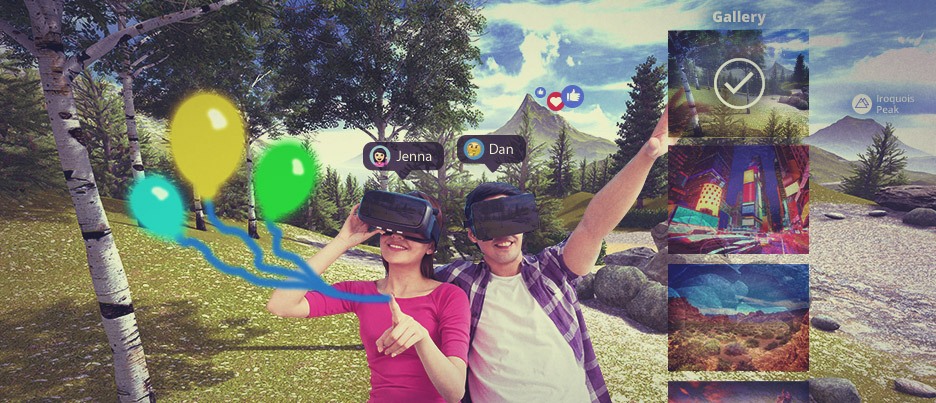Will AR Enter the Social Media Mainstream?

It’s hard to deny our innate urge to have the best and newest of technology. It seems that every time I log onto my computer I come across a new kind of camera, app, phone, you name it. The latest “must-have” seems to be augmented reality (AR). Although AR technology has been developing for several years, Facebook turned it into a trending topic at the F8 Developer’s Conference recently with its introduction of Facebook Spaces. According to Facebook, Spaces is an in-app experience that allows users to interact with their Facebook friends in virtual reality. The new advancement will allow users to view 360 video through their AR headset as well as to draw and hold objects among other things, in a seamless, immersive space.
Googling “Facebook AR” will, of course, bring up a wide range of opinions on this subject. While many view it as the further decline of face to face interaction, others view it as a logical and positive step forward. In my opinion, it’s the latter. It seems that every time a new technology comes out, the world is baffled for a full two seconds before moving on to the next “new” thing. Often, when new technologies debut (glitches and all) they are greeted with a negative reception. This is human nature; change can be scary and many of us will resist it. Hating change is a default in our programming. All of the disruptive technologies of the recent past faced this – from computers, to the internet, cellphones, smartphones and notebook tablets. Of course, not every one of these ideas ultimately changed the world. In fact, many of them have indeed failed. But without these experiments, technology as we know it today certainly would not be the same.
In 2014, Facebook bought the virtual reality gaming company Oculus for a hefty two billion dollars. At the time no one really knew what their plan was, and many questioned why Facebook would pay so much for a technology that was hardly perfected. Last week’s announcement provided an answer however, now the question has changed, “Will it stick?”
Spend 10 minutes scrolling through your Facebook feed and count how many 360-degree videos and pictures you see. Open up Snapchat, take a selfie and change the way you look in real time, or even alter the world around you with world lenses. Like it or not, AR is here to stay and our online explorations are bound to become more and more of a multi-sensory experience as the technology is perfected. The implications for brand marketers are immense.
Admittedly, today’s consumers quickly become bored, and most tech advancements quickly become old news. So will AR emerge from its “shiny new object” period to become a core online technology, or another footnote in the list of failed ones? The early signs are encouraging, but let’s wait and see. For now, brands should (at the very least) keep Facebook Spaces and AR technology in their back pocket.

